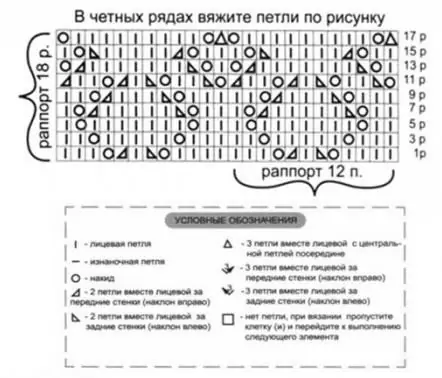
- Autor Sierra Becker [email protected].
- Public 2024-02-26 04:44.
- Zuletzt bearbeitet 2025-01-22 22:11.
Wenn Sie sich entscheiden, diese Art von Handarbeiten als Stricken auszuführen, müssen Sie zunächst die komplexe Wissenschaft der Herstellung einer satzsetzenden Kante beherrschen. Studieren Sie dazu ausführlich die Beschreibungen zum Wählen von Schleifen. Es stellt sich heraus, dass Sie sogar anfangen können, Socken oder einen Pullover zu stricken, indem Sie Schlaufen häkeln. Und wenn es ein praktisches Werkzeug für Sie ist, erh alten Sie eine fertige Satzkante, indem Sie die Luftkette binden und jedes Glied auf die Stricknadel setzen. Dann bleibt nur noch weiter zu arbeiten, der Beschreibung und dem Bild folgend.
Aber die gebräuchlichste Methode heißt "Long Host". Wenn Sie es verwenden, erh alten Sie eine schöne, sauber gefertigte erste Reihe, die elastisch genug ist, sich jedoch nicht dehnt und Ihr Produkt vor Verformung schützt. Für Strickanfänger empfehlen erfahrene Handarbeiterinnen, das Anschlagen von Maschen zu üben und dabei besonders auf die Fadenspannung zu achten. Tatsächlich bestimmen die Steifigkeit (Weichheit), Dichte (Freiheit) der Ausführung des Satzrandes das Erscheinungsbild des Endprodukts und die Bequemlichkeit des täglichen Tragens. Zur ZeitWorkout können Sie die notwendige Arbeit mit einer Nadel erledigen, aber wir empfehlen Ihnen zukünftig, durch Zusammenf alten von zwei Stricknadeln anzuschlagen.
Also beginnen wir den Maschensatz auf den Stricknadeln, indem wir die erforderliche Menge an freiem Faden vom Hauptstrang messen. Die Länge des "Schwanzes" wird wie folgt berechnet: Für jede Schlaufe benötigen Sie 1 bis 2,5 cm (abhängig von der Dicke der Stricknadel und des Garns) und für eine freie Spitze, mit der Sie den Leisten bequem anschlagen können Schleifen, fügen Sie weitere 15-20 cm hinzu.
Lege den Faden um Daumen und Zeigefinger der linken Hand und h alte beide Enden in deiner Handfläche. Ein freier "Schwanz" verwickelt den Daumen und führt zum Ball - dem Zeigefinger. Haken Sie den Faden mit der Stricknadel zwischen Daumen und Zeigefinger ein (Abb. 1).

Ziehen Sie es mit der Nadel zu sich heran und schieben Sie es am Daumen unter das Garn (Abb. 2).

Haken Sie nun den Faden vor dem Zeigefinger (Abb. 3) und ziehen Sie ihn durch die Schlaufe am Daumen (Abb. 4).


Das Anziehen machte eine Schleife am Daumen. Senken Sie es ab und legen Sie den Faden wieder darauf (Abb. 5). Stellen Sie sicher, dass sich die 2 Schlaufen, die sich aus den durchgeführten Manipulationen ergeben, in diesem Moment nicht von der Stricknadel lösen.

Die Abbildungen 6-10 zeigen deutlich, wie weitere Schleifen bis zur gewünschten Nummer gewählt werden.





Falls Ihnen diese Möglichkeit, den Anschlag zu starten, schwer und schwer erscheint, dann finden Sie im Folgenden eine Beschreibung und Abbildungen zum Anschlagen nach der „ready first loop“-Methode:
das „freie Ende“des Fadens festh alten und einmal um die Finger wickeln (Abb. 11);

entfernen Sie die entstandene Schlaufe von Ihrer Hand (Abb. 12);

den mittleren Faden auf die Nadel legen, herausziehen und die Schlaufe festziehen (Abb. 13).

Als nächstes schlagen Sie wie in den Abbildungen 6 bis 10 gezeigt weiter an. Wir hoffen, dass Ihnen diese Beschreibung hilft, die Wissenschaft des Anschlagens einfach und problemlos zu beherrschen.
Empfohlen:
Stricken aus Mohair mit Stricknadeln. Stricknadeln: Schemata. Wir stricken aus Mohair

Das Stricken aus Mohair mit Stricknadeln bereitet den Näherinnen eine wahre Freude, das Ergebnis sind leichte, schöne Dinge. Leser können sich in diesem Artikel über die Eigenschaften dieses Threads und die Funktionen für die Arbeit damit informieren. Auch hier sind Beschreibungen der Ausführung von Mohair-Kleidungsstücken und Fotos von fertigen Produkten. Wenn sie sich auf sie konzentrieren, können Handwerkerinnen schöne warme Outfits für sich und ihre Lieben stricken
Stricken lernen. Wie wähle ich Maschen an den Stricknadeln?

Hast du schon immer davon geträumt, Stricken auszuprobieren? Schließlich ist es so schön, einzigartige Dinge zu haben, und noch dazu mit eigenen Händen gemacht. Aber wie anfangen? 50% des weiteren Erfolgs hängen von einem guten Start ab, und vor allem, damit Leidenschaft und Lust nicht mitleiden. Meine Oma hat mir das Stricken beigebracht. Und das sind die süßesten Kindheitserinnerungen, als meine Großmutter auf einem Stuhl saß, Stricknadeln in die Hand nahm und anfing, Wunder zu wirken. Deshalb biete ich Ihnen an, was mir meine Großmutter als Kind beigebracht hat
Frauenpullover mit Stricknadeln stricken lernen. Wie strickt man einen Damenpullover?

Damenpullover mit Stricknadeln können aus dünnem und dickem Garn gestrickt werden. Der Artikel gibt Strickmuster für durchbrochene Pullover, Mohair, Raglanpullover für kurvenreiche Damen (von 48 bis 52 Größen)
Snudy. Stricknadeln, die lernen, warme, stilvolle Accessoires zu stricken

Snood ist ein Kleidungsstück, das als "2 in 1" klassifiziert werden kann. Es wird als Schal und als Kopfbedeckung getragen. Der Hit der Saison kann als handgestrickter Snood bezeichnet werden. Jeder, der mit Stricknadeln umgehen kann, kann dieses Produkt selbst herstellen
Ein wunderbares Geschenk für einen lieben Menschen - ein Schal für Männer. Stricknadeln lernen, ein warmes Accessoire zu stricken

Möchten Sie Ihren Liebsten ein originelles Geschenk machen? Stricken Sie ihm einen Schal mit Herrenstricknadeln. Es ist nicht nur warm, sondern auch sehr modisch. Sogar ein Strickanfänger kann ein solches Produkt mit eigenen Händen herstellen. Wenn Sie die Namen der Maschen kennen und eine Vorstellung von deren Umsetzung haben, dann können Sie problemlos einen Herrenschal mit Stricknadeln stricken. Verwenden Sie die Vorschläge in diesem Artikel als Tipps
